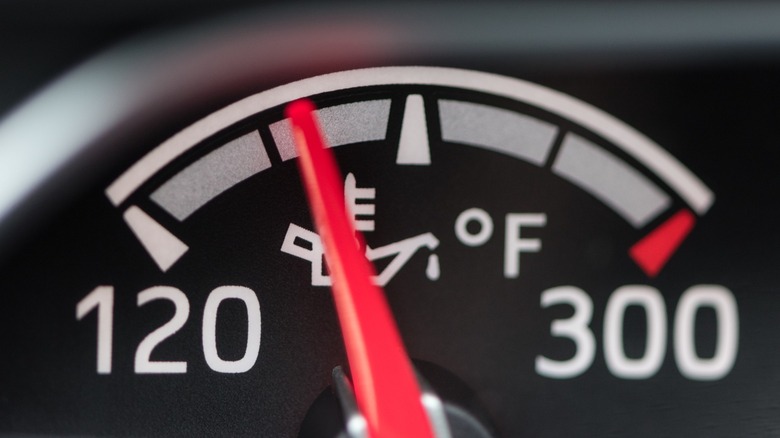How Hot Should The Oil In A 5.7 Hemi Engine Be?
Maintaining the proper 5.7 Hemi oil type and level is a good step toward ensuring the longevity of your engine. Using the wrong kind of oil or letting the level fall below the recommended safe range can lead to overheating, engine oil degradation, and (in extreme cases, such as those present in the Pontiac Fiero) engine failure and fire.
You should check the oil level of your 5.7 Hemi frequently. Some say monthly, and others advocate a quick check of the dipstick at every gas station fill up. The required frequency depends heavily on the amount of oil your car loses between oil changes through leakage or consumption during the combustion process. One of the signs of low engine oil may be excessively hot oil temperatures.
Your 5.7 Hemi-powered car or truck probably has an indicator shaped like an oil can that lights up on the instrument cluster when you start it. While that's a good indication that something is wrong with the system, your car likely has more descriptive gauges hidden in its system menu.
You can find your car's gauges, if equipped, by thumbing through the available pages on the instrument cluster in the owner's manual, or simply Googling it. It will help to know that the service manual for a 5.7 Hemi specifies the "prescribed range" for engine oil temperature is 104-230F or 40-50C.
What causes 5.7 Hemi engine oil to overheat?
A number of factors can cause the engine oil in a 5.7 Hemi to overheat. In addition to low engine oil levels and using the wrong type of oil, high ambient air temperatures, excessive engine coolant temperatures, and hauling heavy loads can lead to increased oil temperatures.
In general, the manufacturer requires the use of SAE (Society of Automotive Engineers) 5W-20 engine oil certified by the API (American Petroleum Institute). However, an exception for 5.7 Hemi-equipped Ram "2500/3500 trucks operating under a gross combined weight rating greater than 14,000 [pounds] (6,350 kg)." This severe-duty case requires the use of SAE 5W-30 engine oil.
Excessive air temperatures, and the resulting heat reflected from roadways, can increase engine oil temperatures. As temperatures outside the engine approach those within, less heat is allowed to transfer to the air surrounding the engine.
Conditions that cause the engine's coolant system to operate at increased temperatures can raise the internal temps of all engine systems including the engine oil. Clogged radiators, failing coolant fans, and low coolant levels are common causes that warrant correction before overheating disables the vehicle.
Finally, towing large trailers or hauling heavy payloads, especially on steep inclines, can lead to increasing oil temperatures. It's best to keep a close eye on oil temps (as well as coolant and transmission temps) during these outings. If any temperatures begin to go over the safe range, it's a good idea to find a safe place to park while things cool off.

